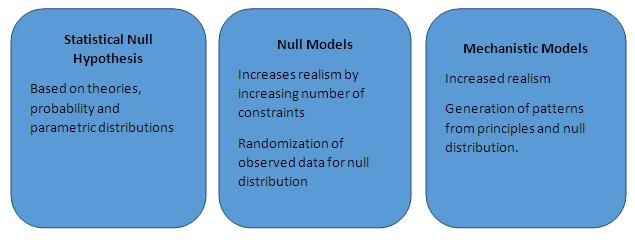- Business Concepts ›
- Statistics ›
- Null Model
Null Model
Definition & Meaning
This article covers meaning & overview of Null Model from statistical perspective.
What is meant by Null Model?
Null Model is a model generated with random samples of a specific distribution where certain elements are constant and others are allowed to vary stochastically. Null model helps in specifying a statistical distribution or randomization of the observed data, designed to predict the outcome of a random process without specifying all of its parameters.
Null model graph is used to match some randomly generated graph, and is believed to be similar until it is proven otherwise. Null Hypothesis is discussed under null model which states that no statistical significance exists in a given set of observations until a statistical evidence nullifies it for an alternate hypothesis. Null models form an intermediary between statistical null hypothesis (one obtained through theories) and Mechanistic models (one obtained through process with all parameters)

Example
Consider a null model with 1 degree of freedom and a log-likelihood of -8024. Similarly assume alternative model with 3 degrees of freedom and a log-likelihood of -8012. Then the probability of its difference is, chi squared value of +2(8024-8012)=24 with 3-1=2 degrees of freedom. Later on by following certain assumptions, chi squared distribution is followed and hence p value is computed.
This article has been researched & authored by the Business Concepts Team which comprises of MBA students, management professionals, and industry experts. It has been reviewed & published by the MBA Skool Team. The content on MBA Skool has been created for educational & academic purpose only.
Browse the definition and meaning of more similar terms. The Management Dictionary covers over 1800 business concepts from 5 categories.
Continue Reading:
What is MBA Skool?About Us
MBA Skool is a Knowledge Resource for Management Students, Aspirants & Professionals.
Business Courses
Quizzes & Skills
Quizzes test your expertise in business and Skill tests evaluate your management traits
Related Content
All Business Sections
Write for Us